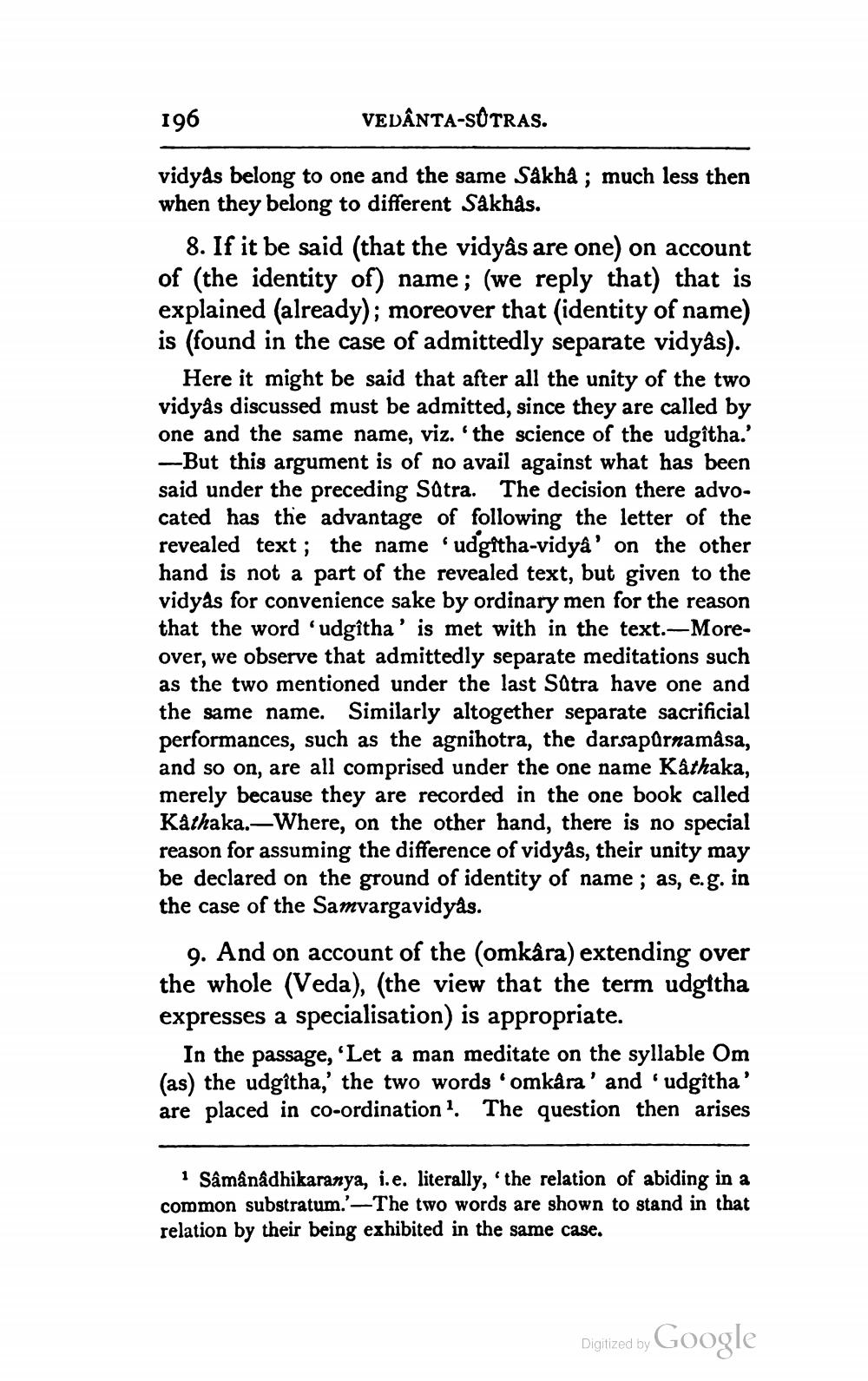________________
196
VEDANTA-SÛTRAS.
vidyas belong to one and the same Sâkhâ; much less then when they belong to different Sâkhâs.
8. If it be said (that the vidyâs are one) on account of (the identity of) name; (we reply that) that is explained (already); moreover that (identity of name) is (found in the case of admittedly separate vidyâs).
Here it might be said that after all the unity of the two vidyâs discussed must be admitted, since they are called by one and the same name, viz. 'the science of the udgîtha.' -But this argument is of no avail against what has been said under the preceding Sutra. The decision there advocated has the advantage of following the letter of the revealed text; the name 'udgitha-vidyâ' on the other hand is not a part of the revealed text, but given to the vidyas for convenience sake by ordinary men for the reason that the word 'udgîtha' is met with in the text.-Moreover, we observe that admittedly separate meditations such as the two mentioned under the last Sûtra have one and the same name. Similarly altogether separate sacrificial performances, such as the agnihotra, the darsapûrnamâsa, and so on, are all comprised under the one name Kâthaka, merely because they are recorded in the one book called Kathaka.-Where, on the other hand, there is no special reason for assuming the difference of vidyâs, their unity may be declared on the ground of identity of name; as, e.g. in the case of the Samvargavidyâs.
9. And on account of the (omkâra) extending over the whole (Veda), (the view that the term udgitha expresses a specialisation) is appropriate.
In the passage, 'Let a man meditate on the syllable Om (as) the udgîtha,' the two words 'omkâra' and 'udgîtha' are placed in co-ordination. The question then arises
1 Sâmânâdhikaranya, i.e. literally, 'the relation of abiding in a common substratum.'-The two words are shown to stand in that relation by their being exhibited in the same case.
Digitized by Google




